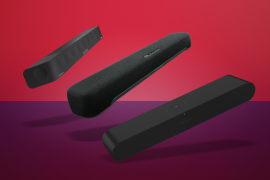Huawei Watch Fit 3 review: hip to be square
New looks and a better build for Huawei's fitness-focused smartwatch
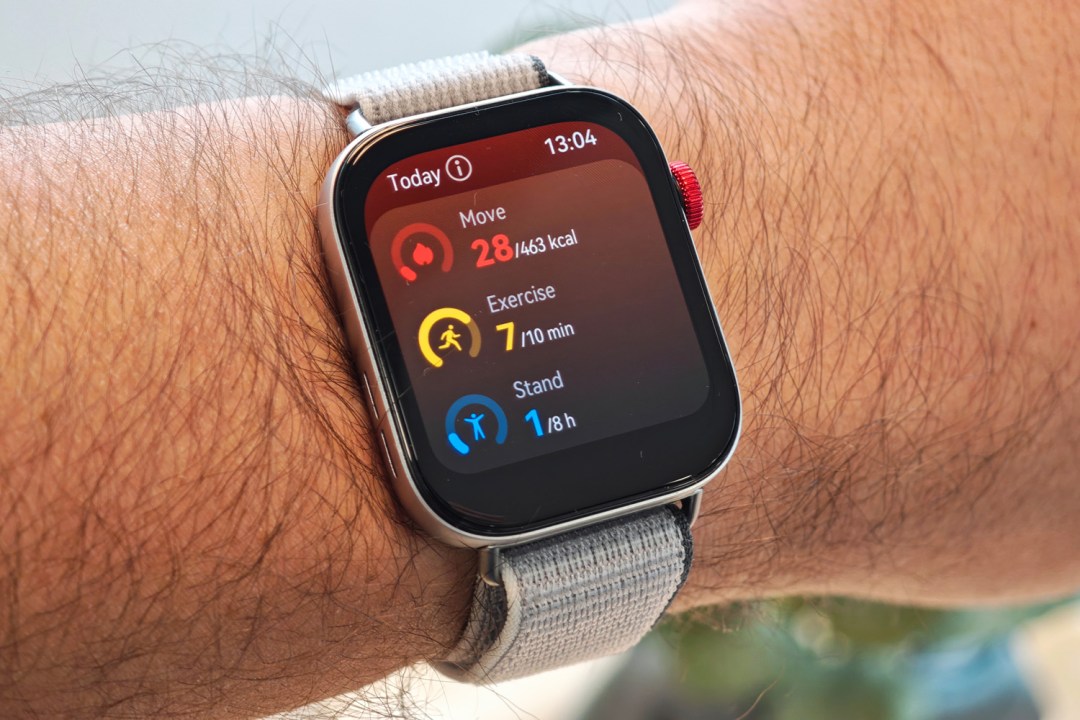
Stuff Verdict
Elevates Huawei’s fitness-focused smartwatch, without forgetting what made the previous one such great value for money. The Huawei Watch Fit 3 delivers accurate exercise tracking in a stylish chassis.
Pros
- Higher quality materials and streamlined styling
- Excellent battery life
- Thorough fitness guides
Cons
- Software setup could be smoother
- proprietary strap fitment
- Very limited third-party app support
Introduction
Huawei’s Watch Fit wearables always felt a little too close to its more basic fitness bands. Once the firm started going super-high end with its circular smartwatches, that gulf only got bigger. That all changed in 2024. The Huawei Watch Fit 3 swaps a rectangular screen for a square one, in a move that’ll have Apple Watch SE owners doing a double-take.
A bigger battery and more advanced fitness tracking then look to raise its profile from humble fitness tracker to fully-fledged smartwatch, for those who like the modern look over a more traditional timepiece. Yet pricing has barely changed, starting at £140/€159 in the UK and Europe.
Does that take the Watch Fit from a Fitbit rival to a true Apple Watch alternative?
How we test wearables
Every smartwatch and fitness tracker reviewed on Stuff is worn 24/7 throughout the testing process. We use our own years of experience to judge general performance, battery life, display, and health monitoring. Manufacturers have no visibility on reviews before they appear online, and we never accept payment to feature products.
Find out more about how we test and rate products.
Design & build: flat packed
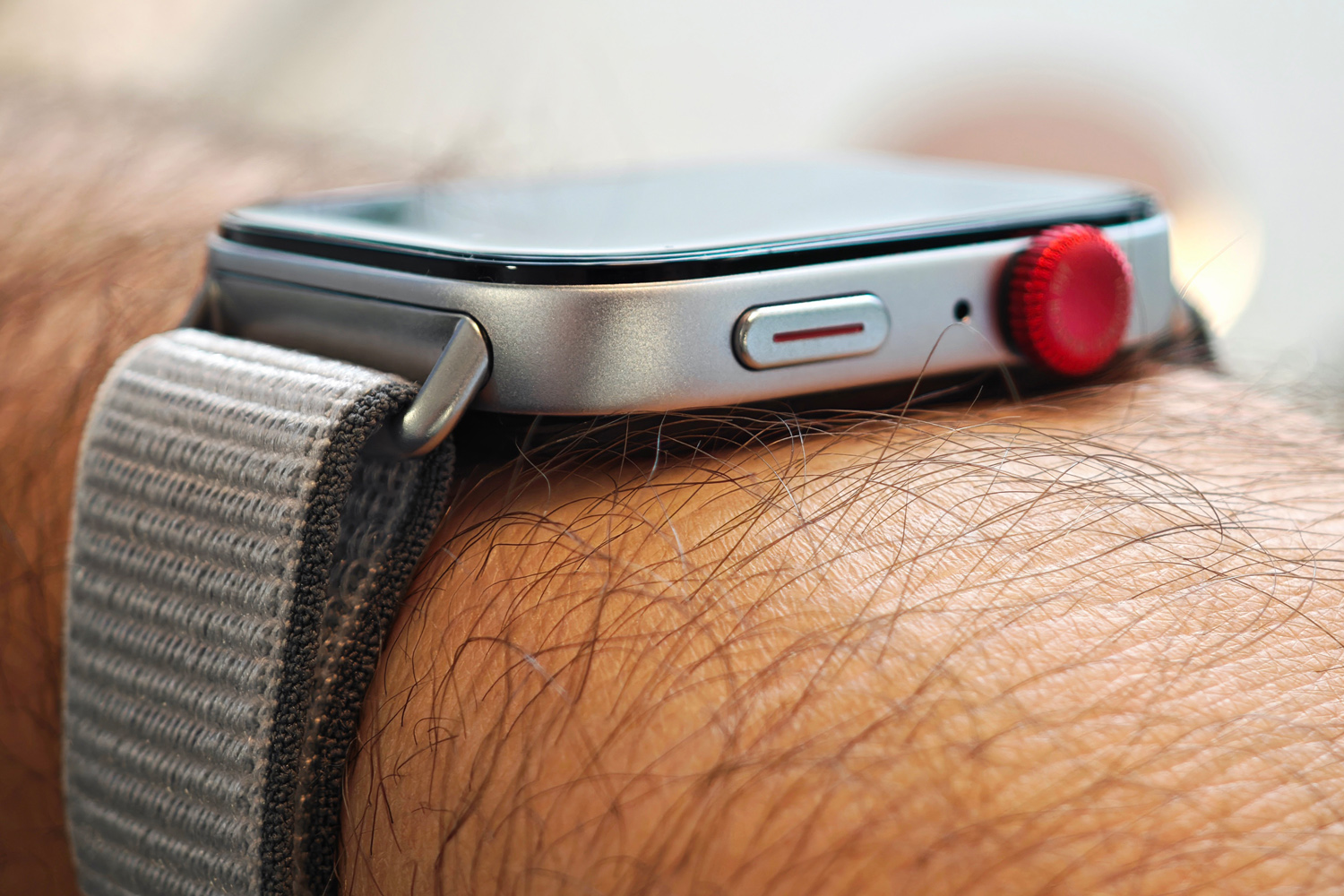
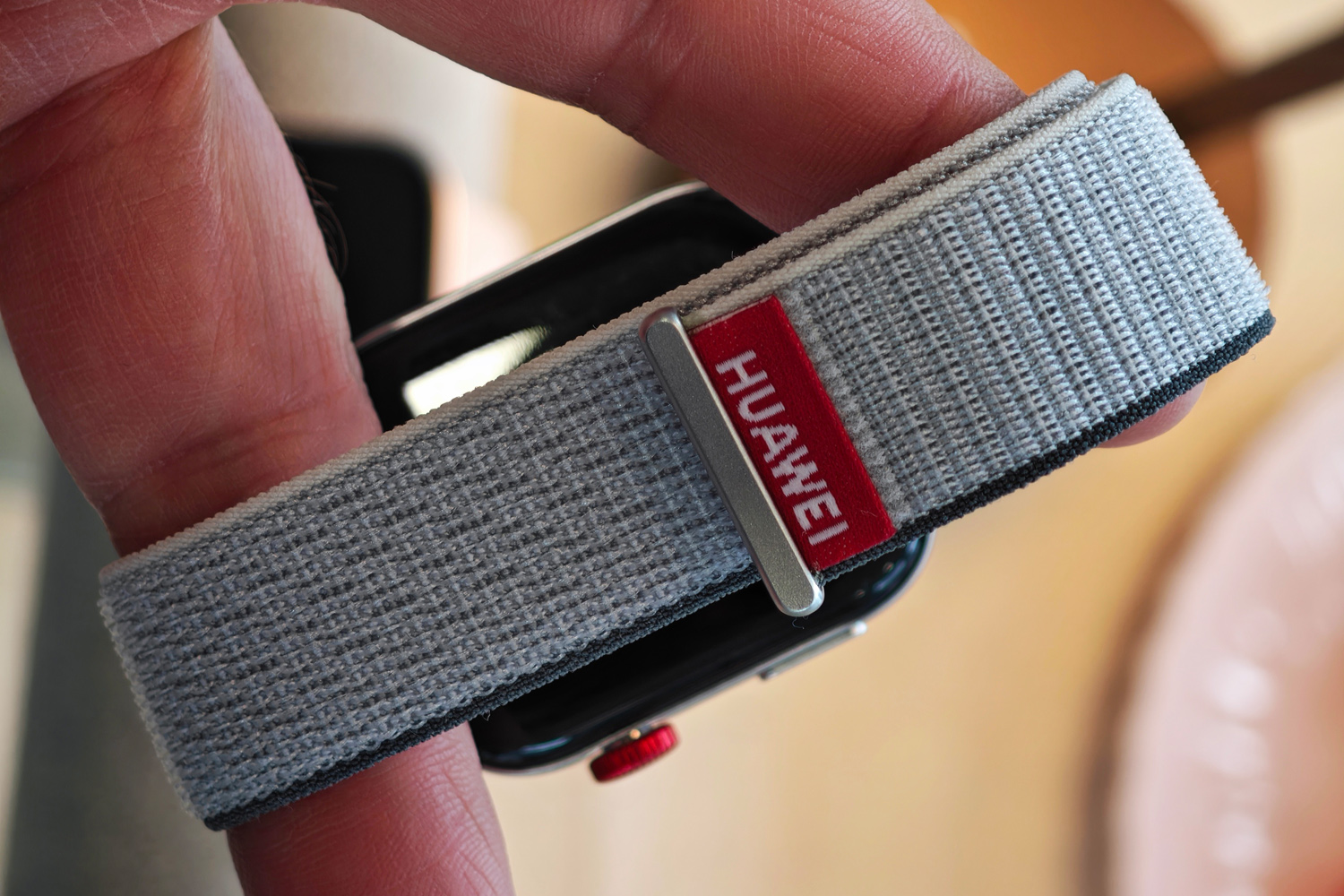
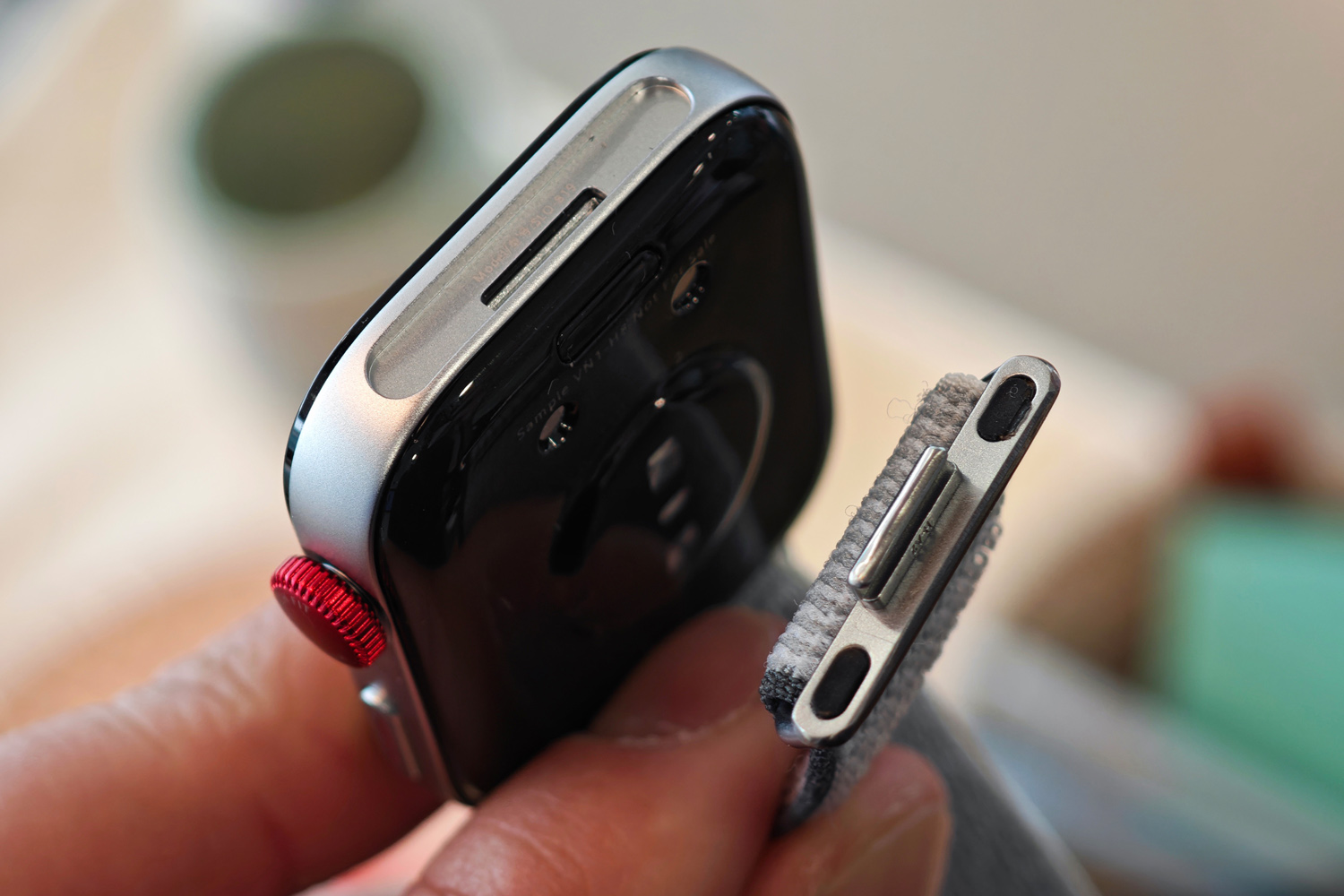
The Huawei Watch Fit 3 is thinner and lighter than either a Fitbit Versa 4 or an Apple Watch SE 2, at just 26g for the watch body and only 9.9mm at its thickest point. It looked especially svelte on my wrist, but not to the point it looked ridiculous. I maintain Google should’ve sold the Pixel Watch 2 in multiple sizes in order to appease those with wrists like mine, but the single 43x36mm case option seen here looks spot on.
The Watch Fit 3 gets a matte aluminium body, with straight sides and softly curved corners. It gives me real iPhone vibes, at a time Apple is still all-in on bulbous proportions for its non-Ultra watches. It feels like a higher-end watch than the price suggests.
The whole thing is 5ATM waterproof, so can be worn in the swimming pool as well as the shower; rain never caused me any concerns throughout my testing.
There are a bunch of case colour and watch strap combinations to choose from. My review unit was green, with a green fluoroelastomer plastic strap; it’ll set you back £140/€159, as will the Black, Pink and Moon White models, and the Grey version that comes with a nylon strap. There’s also a Pearl White model with a leather strap, which costs £160/€179. If you like your tech to make a statement, I’d suggest the Pearl White version, which gets a gold finish. The Moon White and Grey versions are a bit more subtle, with a splash of red on the digital crown giving them more wrist presence than the rest of the line-up.
The rotating crown is as satisfying to twist as all smartwatch crowns are, with a continuous motion rather than distinct ratcheted notches. It works brilliantly for scrolling through app screens. The other side button proved handy for quickly activating fitness tracking.
Huawei has gone for proprietary strap connectors here, with release mechanisms built into the body of the watch. There’ll be an accessory to use standard watch straps if you prefer those, but at the time of writing I couldn’t find it for sale on the Huawei website. The mechanism just takes a push to unlock each strap – no tools required – and holds the bands in place firmly. My review unit’s fluoroelastomer strap held up well after several weeks of testing, showing no permanent marks or damage, though personally I’d prefer the nylon strap for 24/7 wear.
Screen: sharp looking
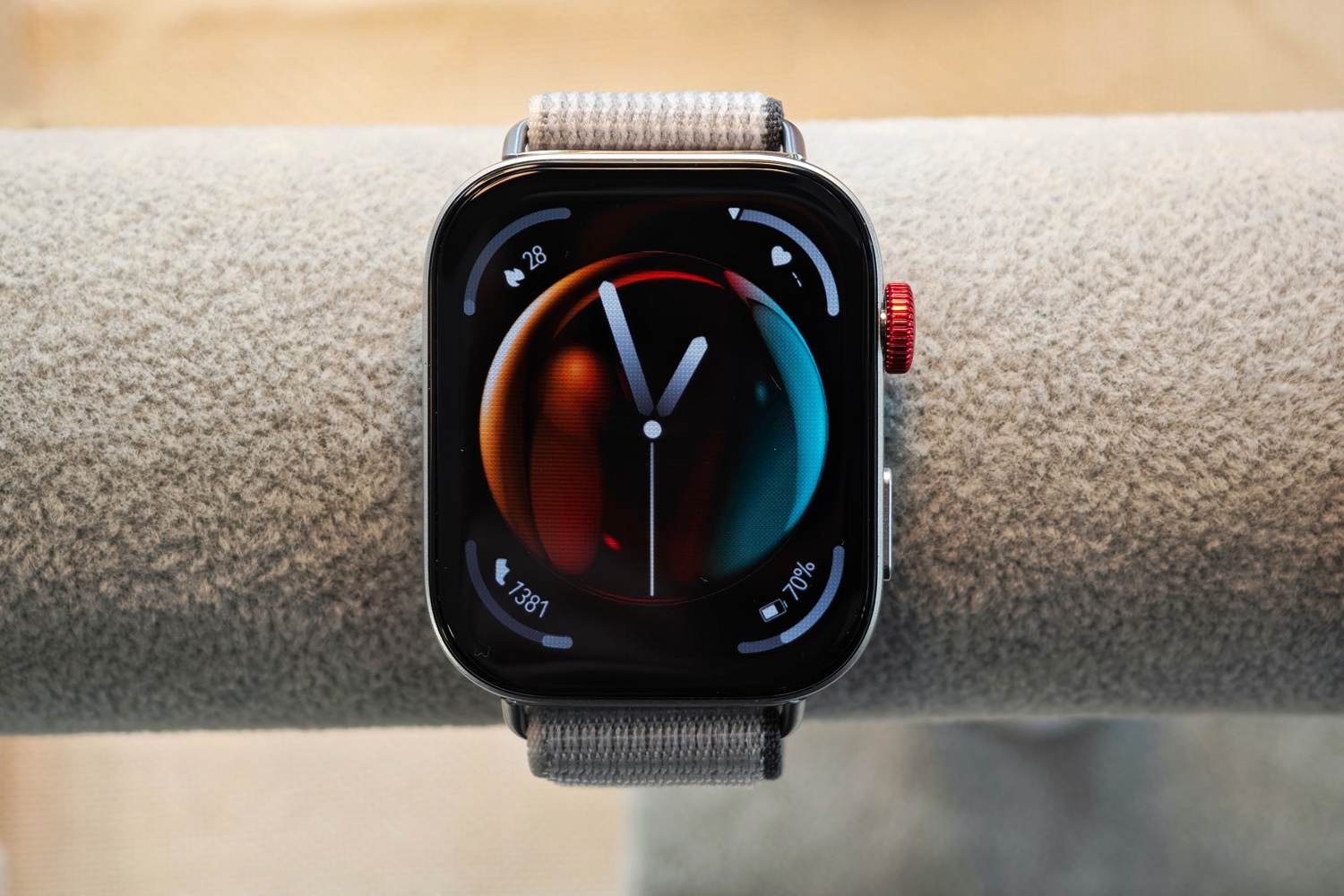
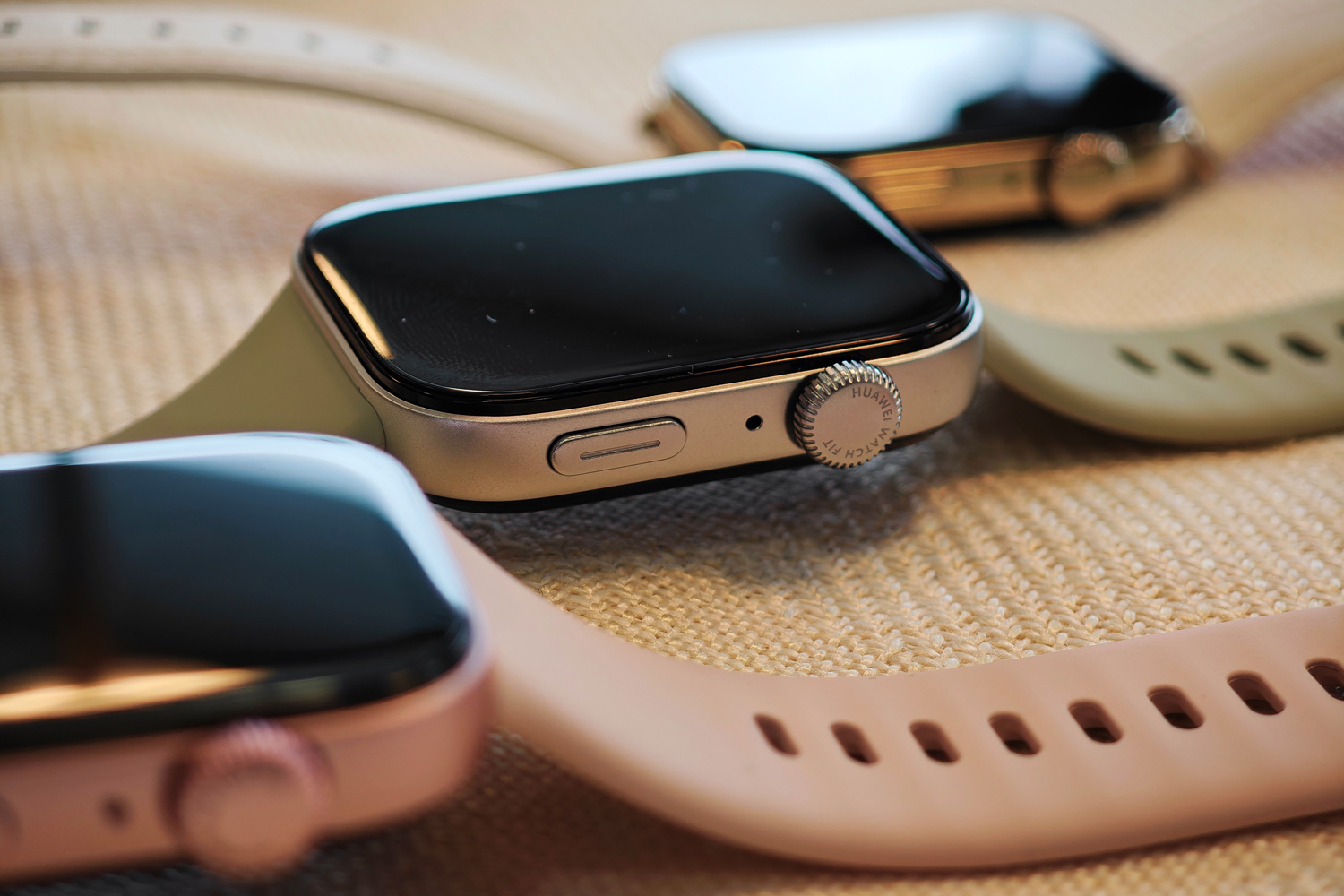
The move to a square screen was, I think, a smart one. The outgoing Watch Fit 2’s rectangular display could look a little out of proportion on smaller wrists, but the 1.82in AMOLED used here will suit all sizes. It’s shorter yet wider, and with skinnier screen bezels that embarrass the Google Pixel Watch 2.
The 2.5D glass is beyond subtle, curving into the metal frame but otherwise feeling like a flat panel. The frame hopefully puts enough distance between it and anything you might bash the watch into to prevent (or at least minimise) any damage. The few accidental knocks I managed throughout my testing left it no worse for wear.
The 60Hz AMOLED panel looks sharp, bright and colourful enough for a smartwatch. Huawei claims of a peak 1500nits brightness; I couldn’t confirm that exact figure, but had no trouble seeing the watch face clearly when outside on particularly sunny days.
There’s an always-on display mode, which the watch warns you could slice battery life in half if you enable it. It wasn’t quite that impactful in my testing, but definitely meant I spent more time tethered to mains power than when I stuck with the usual ‘raise to wake’ and ‘tap to wake’ gestures. That said, I like that the plentiful selection of watch faces almost all had always-on modes.
Software experience: in perfect harmony
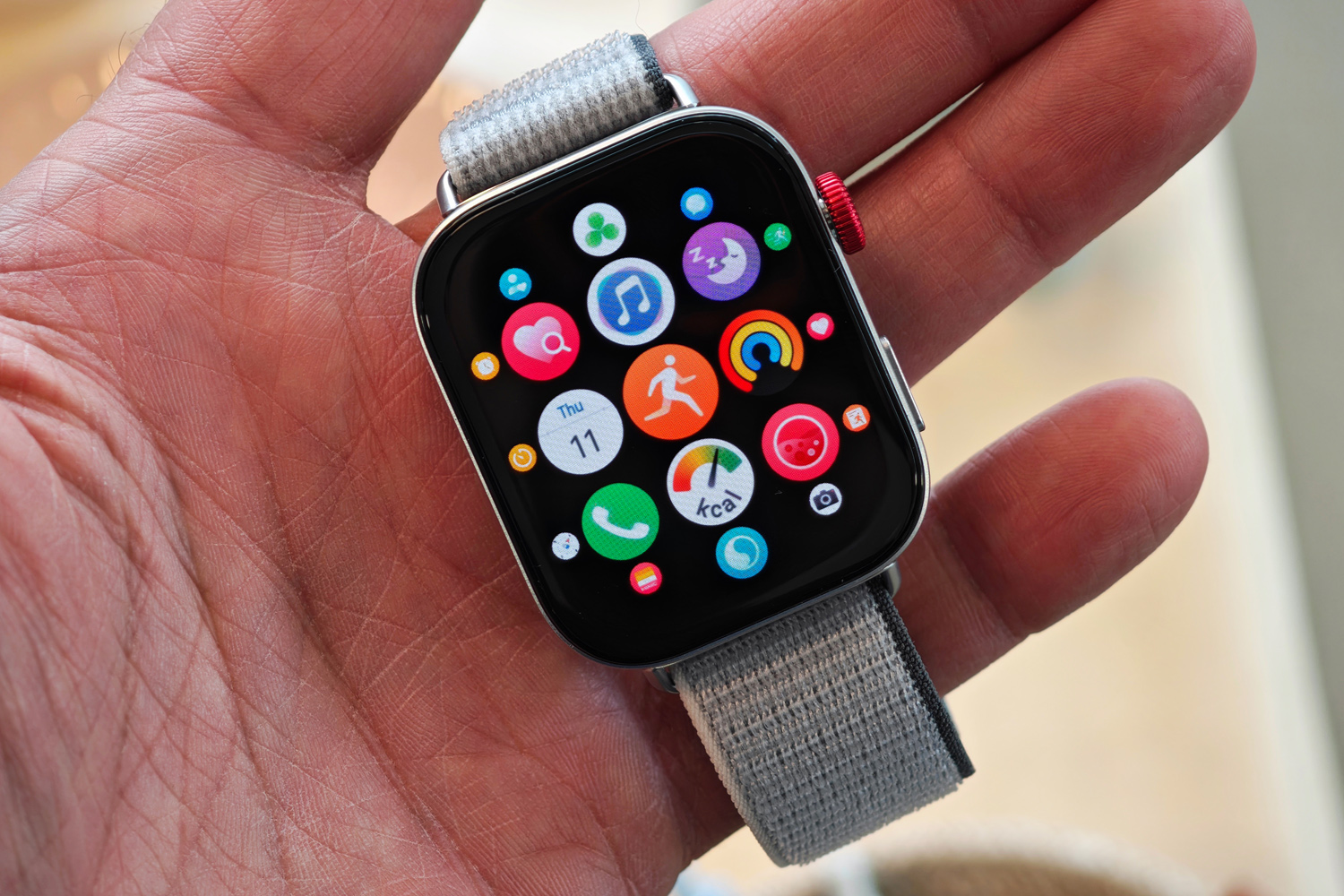
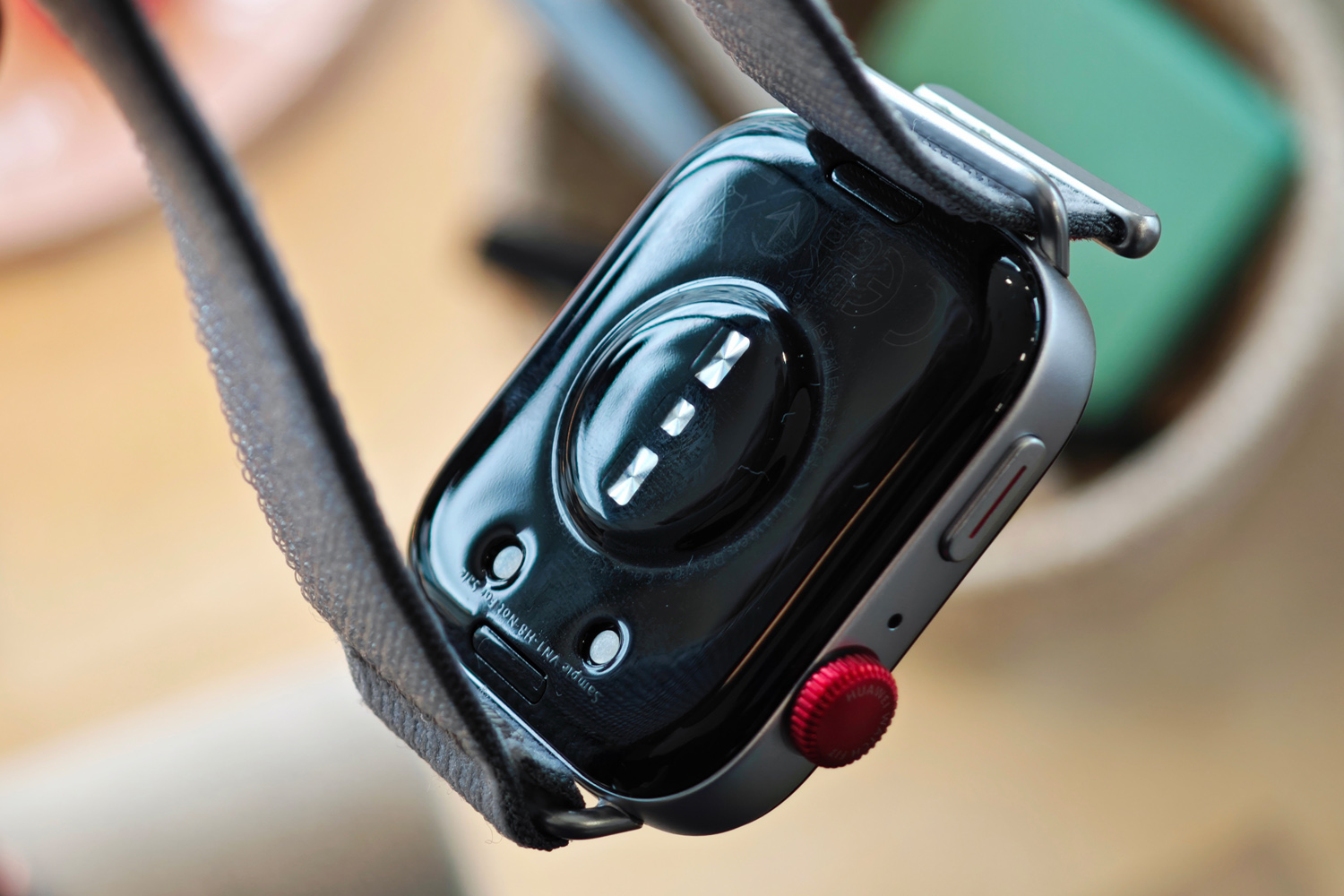
Huawei has overhauled the Watch Fit interface into a square-ified version of the HarmonyOS software found on its other watches. It’s simpler, with more colour and a card-based layout that’ll feel familiar to WearOS and Apple Watch owners. You swipe sideways for different cards, up for unread notifications, and down for the quick settings screen.
It’ll pair with iOS and Android devices, though the latter is limited by Huawei’s banishment from the Play store. You’ll have to sideload it, either directly from the firm’s website or its AppGallery. The Health App is coming to Samsung’s Galaxy Store, at least, which will make it easier for Galaxy owners to get on board – though at the time of writing it hadn’t shown up yet. Once you do, you won’t find much in the way of third-party app support.
The UI felt instantly familiar, with the same icons I’ve seen on other Huawei watches. The feature list is similar, too, with Bluetooth calling via your phone, SMS and third-party chat app replies from your wrist using canned responses, and even a flashlight app that can cycle between different colours. Apparently it’s one to bring out at nightclubs and music festivals.
Naturally it’s fitness where things are most comprehensive, with over 100 different sports and activities available for tracking using Huawei’s TruSeen 5.5 sensor. This can track SpO2 and heart rate, as well as sleep tracking and womens’ cycle tracking. I like that only a bunch of sports are shown by default, so you don’t have to scroll through a bunch of obscure ones to find Swimming or Tennis. Guided fitness animations also now show you how to perform warm up stretches across seven different workouts, and the watch can broadcast your heart rate to supported fitness equipment – though I didn’t make it to a gym during testing to confirm which brands.
New additions include contextual suggestions, such as “it’s hot, maybe exercise inside today” or “you’re falling behind, maybe lower your intensity”, and an AI running plan. This has an in-run pace setter, predicts times for various disciplines based on your prior performance, and even has a precision track lane mode for accurate splits when on a purpose-built surface. I’m not much of a runner, usually sticking to a couch-to-5K podcast when I do put my trainers on, so can’t say whether this will make a big difference to anyone who regularly chases personal bests at park runs – but the way the UI changes colour to represent heart rate zones is definitely appreciated.
Getting a GPS connection wasn’t the quickest, but once locked the routes I recorded were on par with a much more expensive Polar running watch. Heart rate and sleep tracking were also a very close match too, which to me says you’re getting excellent health and exercise records with one of these on your wrist.
Performance & battery life: week-long warrior
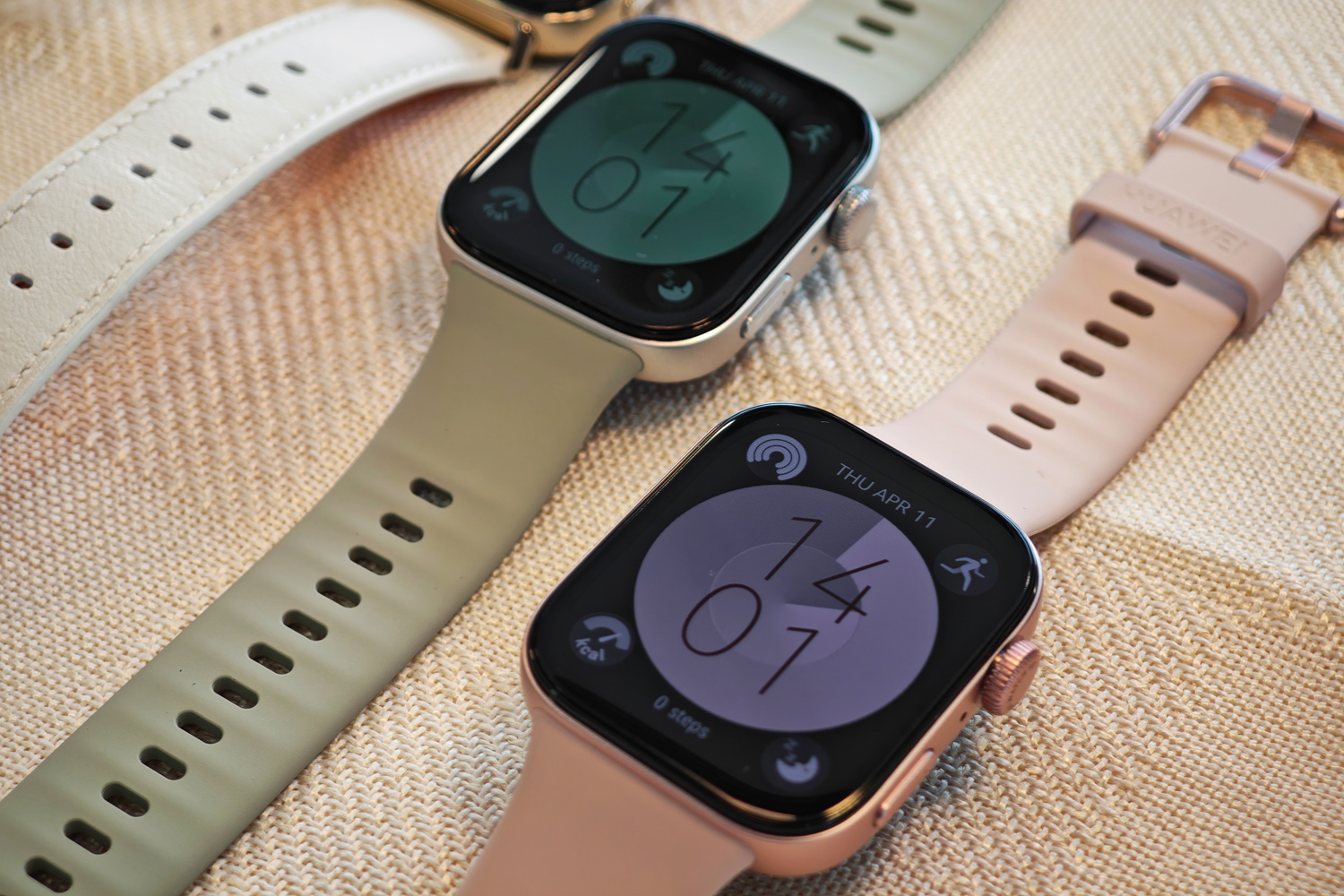
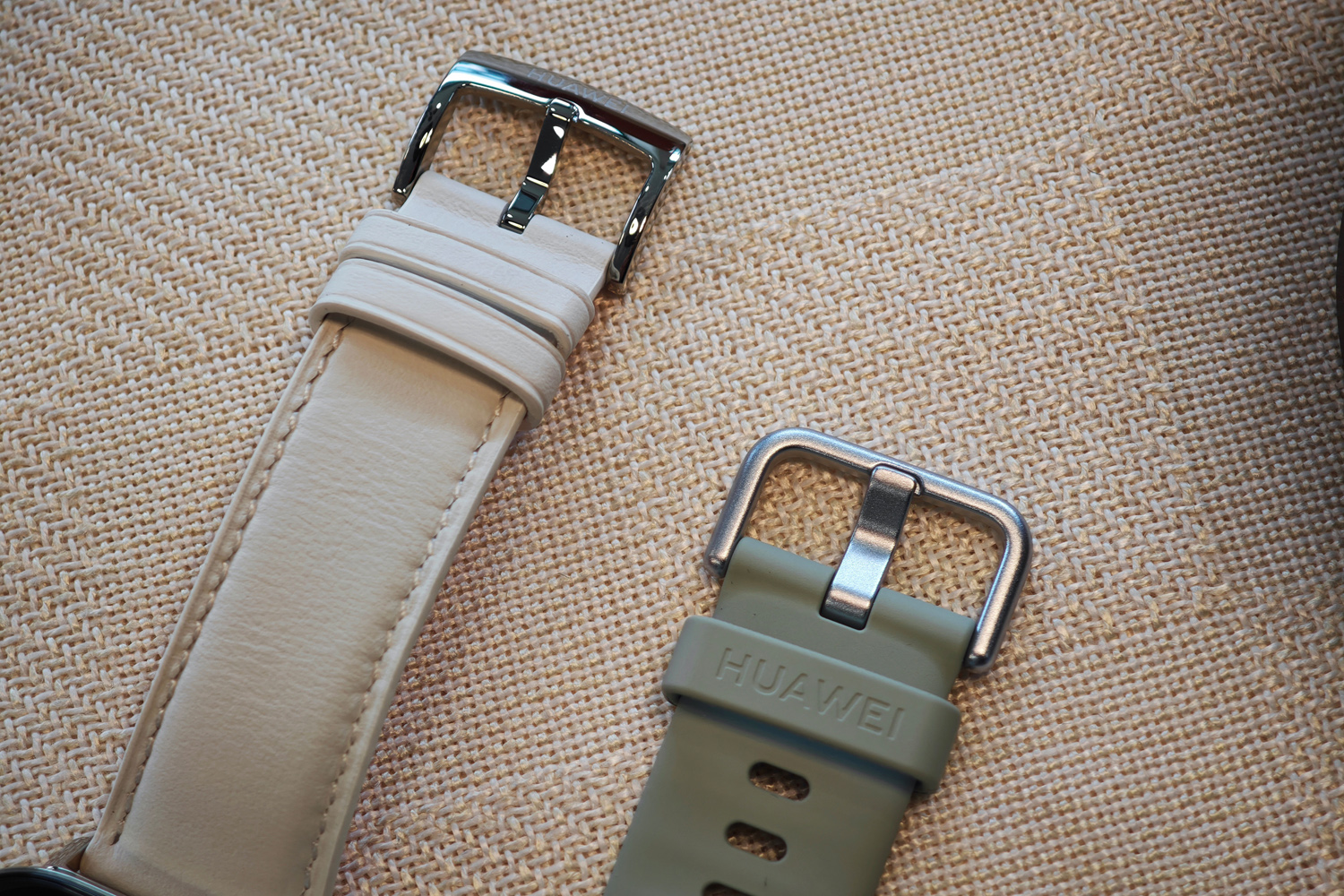
Huawei doesn’t make a big song and dance about the chipset, memory and storage of its wearables. I can sort-of understand the first two; as long as the UI feels responsive and you’re not left waiting for apps to open, it shouldn’t matter whether there’s own-brand silicon or an off-the-shelf CPU inside. The firm’s knack for battery life that’s five times longer than the average WearOS watch is a big clue it’s doing things its own way, rather than tapping up Qualcomm for anything from the Snapdragon Wear line-up.
Keeping storage a secret makes less sense when one of this watch’s selling points is local music playback through a pair of Bluetooth earphones. There’s no clue to be found in the Settings screen, or the companion app. It was only when I tried to add a big batch of MP3s I got a warning saying the watch only had 1520MB of available capacity.
At least the interface was responsive, opening apps at a decent lick, and reacting quickly to swipes and taps. Which is pretty much all you can ask from a fitness watch on the performance front.
Battery life is what separates the Watch Fit 2 from other smartwatches. The 400mAh cell inside is good for a comfortable 10 days of ‘typical’ use, which for me meant a few exercise sessions a week, a decent amount of incoming notifications from my paired smartphone, and 24/7 fitness monitoring. If you think nothing of a daily 10k, with location and heart-rate tracking, you’ll need to plug in sooner than a once-a-week gym visitor. Still, that’s a league ahead of either the latest Apple Watch SE or almost any WearOS watch.
The charging cable uses a proprietary connector with magnetic pins, but name me a wearable not made by Apple or Samsung that isn’t these days. Huawei says a 10 minute refuel is enough for a full day of use, and that largely bore out in my testing.
Huawei Watch Fit 3 verdict
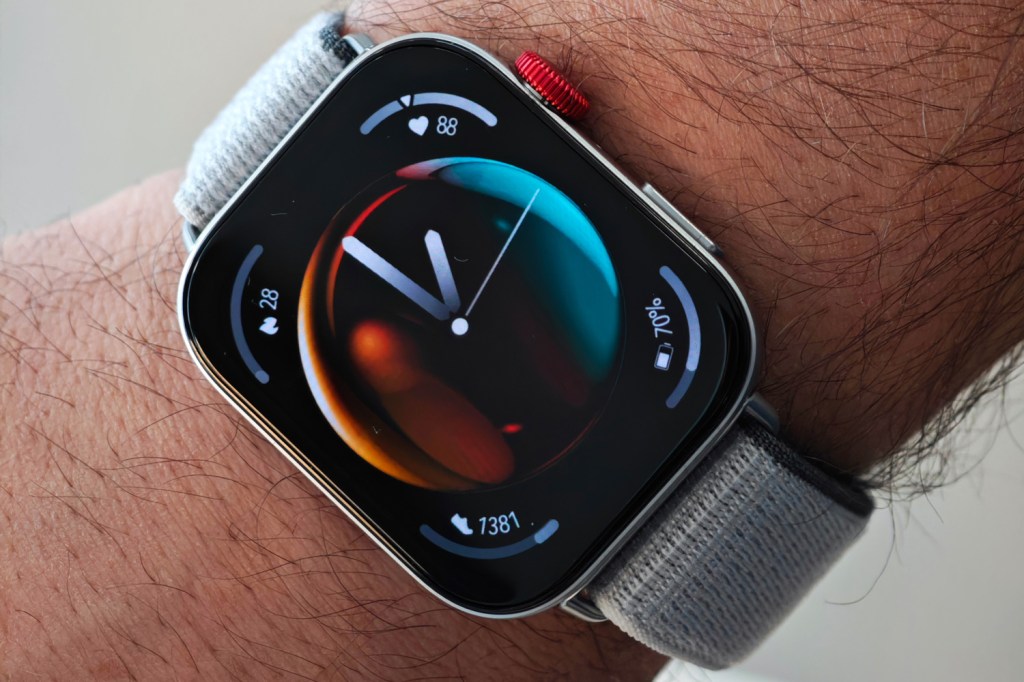
Previous Huawei Watch Fits were unmistakably value-focused fitness trackers. They could track plenty of sports, lasted a long stretch between charges, and had sharp screens – but the sizes didn’t suit all wrists, and the materials quality was a step behind the firm’s more traditionally styled smartwatches. The Watch Fit 3 addresses that.
It looks and feels like a more expensive model, even though pricing hasn’t actually gone up compared to the previous generation. Any square-faced smartwatch risks inevitable comparisons to the Apple Watch, but Huawei has sidestepped that neatly with flat glass and an angular body.
I still have reservations about the companion app, which remains a faff to get running on Android phones, and the proprietary strap mechanism is an extra step for anyone who likes to regularly change their bands. But there’s otherwise enough sporting pedigree that square-faced smartwatch fans should definitely give it a sniff.
Stuff Says…
Elevates Huawei’s fitness-focused smartwatch, without forgetting what made the previous one such great value for money. The Huawei Watch Fit 3 delivers accurate exercise tracking in a stylish chassis.
Pros
Higher quality materials and streamlined styling
Excellent battery life
Thorough fitness guides
Cons
Software setup could be smoother
proprietary strap fitment
Very limited third-party app support
Huawei Watch Fit 3 technical specifications
| Screen | 1.82in AMOLED |
| Sensors | Accelerometer, gyroscope, optical heart rate sensor |
| Connectivity | GPS, Bluetooth |
| Software | HarmonyOS |
| Battery | 400mAh |
| Durability | 5ATM waterproof |
| Dimensions | 9.9mm thick, 26g (watch body only) |



